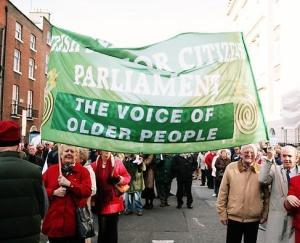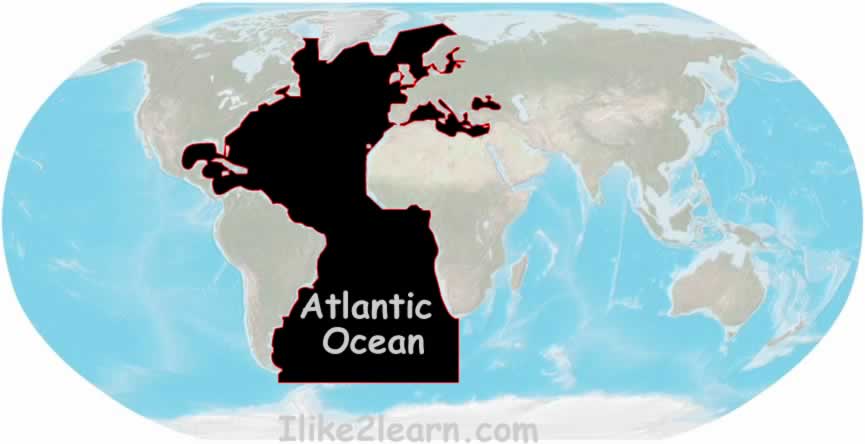Sligo Council faces a legal bill of millions after losing Lissadell House high court case
Elanor Walsh (centre) with family members speaks to the media outside the Four Courts in Dublin after her parents secured a Supreme Court ruling over Sligo County Council.
The Sligo County Council could face a legal costs bill of several million euro after the owners of the Lissadell House won a unanimous Supreme Court ruling there are no public rights of way across four avenues through the historic estate.
The court did find a public right of way across part of a coastal route through the estate taking in the beach at Lissadell but quashed a High Court declaration granting a right to park cars on Lissadell lands adjoining that section.
 The five-judge court’s decision came after a long and bitter legal battle between the Council and barristers Constance Cassidy SC and Edward Walsh SC (above icture), who bought the estate and 410 acres for €4m in 2003 and spent €9.5m restoring it.
The five-judge court’s decision came after a long and bitter legal battle between the Council and barristers Constance Cassidy SC and Edward Walsh SC (above icture), who bought the estate and 410 acres for €4m in 2003 and spent €9.5m restoring it.
Lissadell was the former home of the Gore-Booth family, of whom Constance Gore-Booth, later Countess Markievicz, became the first woman in the world to hold a seat in Cabinet after her appointment as Minister for Labour in the First Dail.
Sir Josslyn Gore-Booth took over the estate in 1982 after the President of the High Court approved its conveyance to him by the Committee representing the interests of Sir Michael Gore-Booth, who had been made a ward of court in 1944 due to incapacity. Sir Josslyn was the last member of his family to own the estate.
When the new owners learned in 2004 public rights of way were being asserted over routes in the estate, they locked the gates on the main avenue, resulting in a campaign to ensure public rights of way at Lissadell in which, the Supreme Court noted, local councillor Joe Leonard was “particularly active”.
After the Council in December 2008 resolved to amend the county development plan to provide for preservation of public rights of way over four routes, the owners took High Court proceedings insisting there were no public rights of way.
After a 58 day hearing, Mr Justice Bryan McMahon dismissed the owners claims but they appealed to the Supreme Court in a hearing that ran for ten days.
Mr Justice Nial Fennelly, Mr Justice Liam McKechnie and Mr Justice John MacMenamin prepared the Supreme Court’s 116-page judgment, delivered yesterday, with which the Chief Justice, Ms Justice Susan Denham and Mr Justice John Murray agreed.
The matter was adjourned to allow the sides consider the judgment and costs and other issues will be decided later. The costs of the High Court case were estimated at more than €6m and overall costs are estimated at more than €7m.
The case concerned four routes through the estate.
The Supreme Court said the common law of Ireland requires, before a public right of way can be established, it is necessary to prove the owners of the lands dedicated the way to the public and the public accepted that dedication.
What was required was proof of use of the way by the public as of right for such a period of time and of such frequency and intensity as to lead to an inference, on considering all the circumstances, the landowners dedicated the way to public use.
The High Court found public use of the routes through the estate dated from at leas the early 1950s and ruled dedication occurred between 1857-1861.
The Supreme Court ruled the High Court judge incorrectly stated the law when he found evidence of public user was itself “right-creating” and led to an “almost irresistible inference” inference of dedication.
That statement failed to distinguish between the acquisition of a right of by prescription, as in the case of a private right of way, and dedication, it said.
The Supreme Court overturned the High Court finding Sir Robert Gore-Booth and his son had between 1857-1861 dedicated public rights of way over routes two routes(one on the Main Avenue and another at Forge Avenue).
Having found no evidence that a third route (Farm Avenue) existed before it appeared on the 1855 Ordnance Survey map, the court ruled the High Court erred in finding that route was dedicated for public use between 1857-1861.
The court agreed with the High Court there was a public right of way over that section of the coastal route passing over the Lissadell lands from Bunbrenóige Bridge (used mainly for access to the sea) but found there was no public right to park cars on the Lissadell lands adjoining that part because that would entail the creation of a public car park on private lands.
Ireland’s Mortgage lending activity increases again


MORTGAGE ACTIVITY CONTINUES TO RISE OFF LOW LEVELS for Ireland
Mortgage lending stood at €750 million in the third quarter of the year, up from €518 million in the previous quarter.
Mortgage lending grew again in the third quarter of the year, with activity up by 12.5 per cent in the year to September 2013 for the third quarter of consecutive growth. First-time buyers and those trading up continue to dominate the market, accounting for 86 per cent of all mortgages issued.
From July to September, some 4,483 mortgages valued at €750 million were issued, up by 38.8 per cent by number, and by 44.8 per cent by value, since the second quarter.
This is only the second quarter since the fourth quarter of 2010 that the volume of mortgages drawn down has exceeded 4,000 and the second quarter that the value of loans has exceeded €700 million. However, lending remains subdued when compared with the boom years – in the third quarter of 2006 for example the number of loans issued stood at 54,623 with a combined value of €10,962 million.
Over 90 per cent of new mortgage credit is now going to home purchasers and the average loan size in the third quarter was €167,276, up 4.4 per cent quarter-on-quarter and 0.4 per cent year-on-year.
Noel Brett, IBF chief executive said that the figures are an indicator “of renewed borrower confidence and activity in the mortgage market”.
“ We will be looking closely at both mortgage approvals and drawdown activity over the final quarter of the year for on-going signs of market strengthening; and it remains to be seen how such factors as supply shortage and rising prices in certain locations will impact on the trend,” he said.
Rachel Doyle, chief operations officer with PIBA, the country’s largest group of financial brokers, welcomed the increase but noted that in a properly functioning mortgage market lending on an annual basis should be of the order of € 10 billion.
“Today’s figures are way off that level with less than € 2.6 billion in lending over the year to the end of September. While that has to do with a lack of lending, another contributing factor is the lack of available properties,” she said, adding that demand for mortgages has been consistent and strong for some time with more than one in every two brokers experiencing an increase in demand for mortgages. She called on the Central Bank “to encourage greater competition in the Irish lending market.”
Big alarm over the Irish medical card withdrawal debacle


The Irish Government needs to reassess its priorities over medical cards, says the IMO Irish doctors body have warned.
Doctors have expressed fresh concern about the pace of withdrawal of medical cards from the most needy.
Government should reassess its priorities, the Irish Medical Organisation said.
Around 150 GPs from around the country met to discuss the issue this weekend.
Dr Ray Walley, a member of the IMO, said the health minister was racing ahead with proposals to extend free GP visit cards to all children under the age of six in the coming months and to extend these cards to all citizens by 2016.
“I believe it cannot be justified to extend these cards so widely while at the same time withdrawing medical cards from patients who are utterly dependent on them,” he said.
“This is a question of priorities and in health, we have to focus scarce resources on those who need our help most.”
Harder for women to breathe during exercise scientists have discovered


It is already known that women experience a greater shortness of breath when exercising compared to men, however scientists have finally discovered why.
According to a team from McGill University in Canada, women experience a greater shortness of breath when exercising compared to men of a similar age irrespective of whether they are young and healthy, older and healthy or if they have chronic heart and lung diseases.
For the purpose of this study, the scientists looked at 50 healthy men and women aged between 20 and 40. None of the participants smoked and all completed an exercise test on a stationary bike.
During this test, the participants’ heart, metabolic and breathing responses were monitored using specialised computer equipment.
The study found that the reason why women find it harder to breathe during exercise is because of greater electrical activation of their breathing muscles.
“Our study uniquely showed that sex differences in activity-related breathlessness could be explained by the awareness of greater electrical activation of the respiratory muscles – specifically the diaphragm – needed to achieve any given ventilation during exercise in healthy young women compared to men.
“Our findings indicated that greater electrical activation of the respiratory muscles during exercise in women is needed to compensate for their biologically smaller lungs, airways and breathing muscles,” explained lead scientist, Dr Dennis Jensen.
The team said it would like to see this research extended to other groups, such as obese men and women.
European Goce satellite burns up before plunging into Atlantic Ocean


A 1-ton European science satellite plunged back into Earth’s atmosphere and incinerated with debris most likely landing in the southern regions of the Atlantic Ocean, officials said on Monday.
The last contact by ground tracking stations with Europe’s Gravity field and steady-state Ocean Circulation Explorer, known as GOCE, was at 5:42 p.m. EST (2242 GMT) on Sunday as the spacecraft flew just 75 miles above Antarctica, the European Space Agency said.
Extrapolating from computer models, officials believe GOCE hit the upper atmosphere about 50 miles above the planet’s surface no later than 7:16 p.m. EST Sunday (0016 GMT Monday) near the Falkland Islands.
“This would put the main area over which any possible GOCE remnants fell to the southernmost regions of the Atlantic Ocean,” the space agency wrote in a status report on its website.
“No damage to property has been reported from any debris,” the report said.
About 25 percent of the car-sized satellite was expected to have survived re-entry.
GOCE was launched in 2009 to map variations in Earth’s gravity. Scientists assembled the data into the first detailed global maps of the boundary between the planet’s crust and mantle, among other projects.
The satellite ran out of fuel on October 21 and had been steadily losing altitude since, tugged by Earth’s gravity.
The 1.2-ton (1,100-kg) GOCE satellite is small in comparison to other spacecraft that recently crashed back into the atmosphere.
In January 2012, Russia’s failed 14-ton (12,700-kg) Phobos-Grunt Mars probe returned. In 2011, NASA’s 6.5-ton (5,900-kg) Upper Atmosphere Research Satellite and Germany’s 2.4-ton (2,177-kg) X-ray ROSAT telescope re-entered the atmosphere.


No comments:
Post a Comment